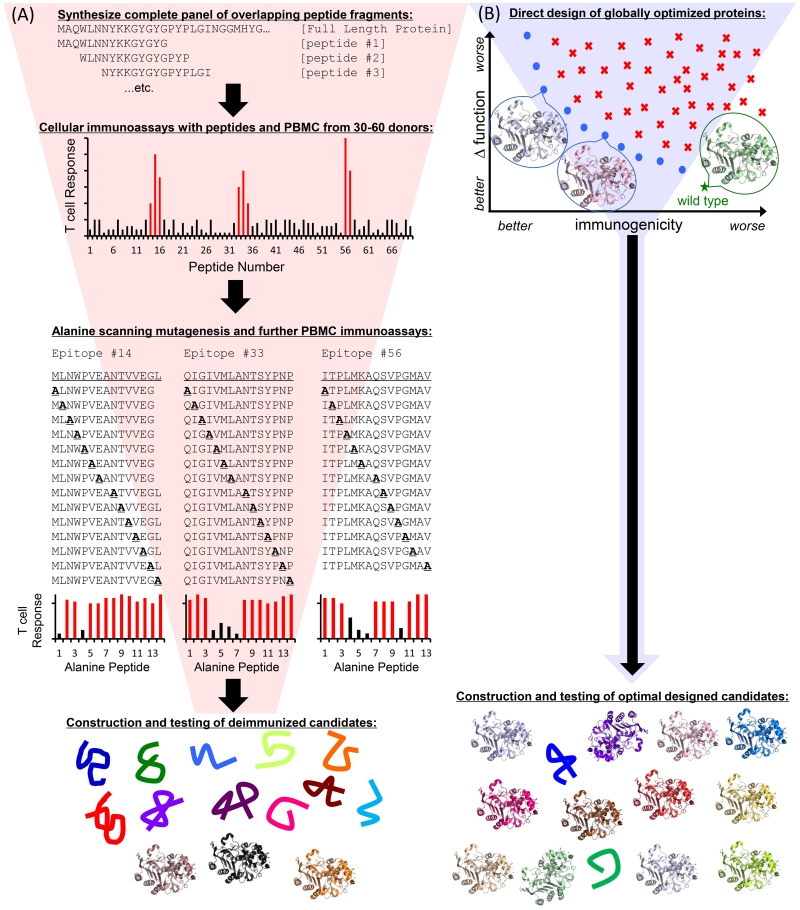Figure 2.
Schematic diagrams for T cell epitope deletion strategies. (A) Experimentally driven deimmunization is a multistage process, moving top to bottom. A panel of overlapping synthetic peptide fragments spanning the full sequence is synthesized. The peptides are then tested for immune recognition, typically using ex vivo cellular immunoassays with blood cells from large panels of human donors. High responses to overlapping immunogenic peptides are indicated by tall red bars. Identified immunogenic peptides are subjected to alanine scanning mutagenesis and retested with the donor human immune cells. Alanine-substituted peptides that reduce immune cell activation are highlighted as shorter black bars. Confirmed deimmunizing mutations are then engineered back into the full length protein and tested for expression, stability, and activity. Typical low hit rates are indicated by a majority of unfolded variant proteins, with only a few stable and active variants shown as cartoon structures. The process benefits from early identification of bona fide immunogenic peptides, but requires significant time and expense to funnel down to functional deimmunized candidates. (B) Computationally driven deimmunization addresses global protein design as a starting point. The protein design space is shown in two dimensions: predicted immunogenicity (x-axis) and predicted change in function (y-axis). Lower values are better in both objectives. Wild type has good molecular function but high immunogenicity. Sub-optimal designs are shown as red “x”es. The blue circles indicate Pareto optimal designs, or designs that are not simultaneously dominated on both objectives by any other single design. The Pareto frontier spans the full spectrum of optimal tradeoffs between the two objective functions. Representative protein designs are shown as cartoon structures. Individual, globally optimal designs balancing predicted reduction in immunogenicity and maintenance of function are selected for construction and analysis of expression, stability and activity. The high hit rate for folded and functional designs is indicated by a majority of cartoon protein structures. Computational optimization facilitates quick transition to validating candidates predicted to be functionally deimmunized. For both experimentally-driven and computationally-driven deimmunization projects, the final deimmunized candidates must be further tested for immunogenicity using cellular immunoassays and/or humanized murine models.

